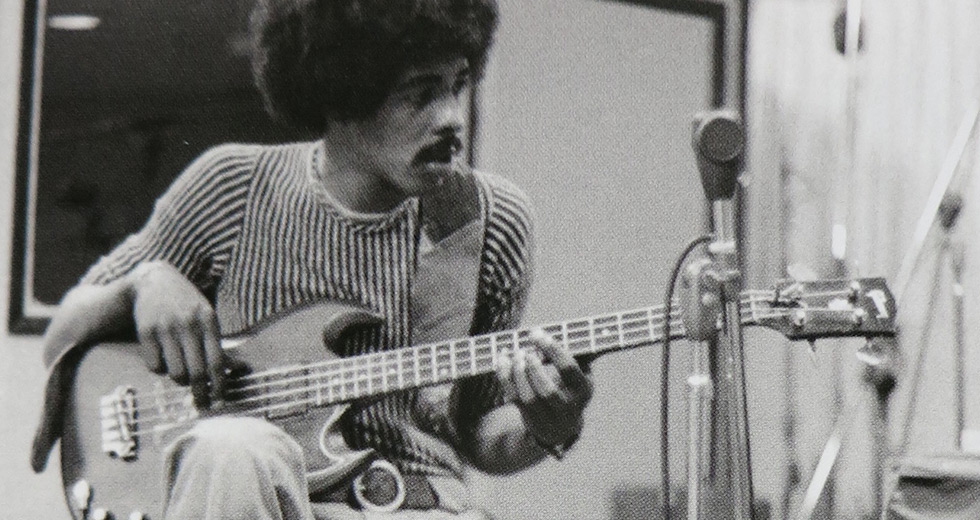One Look: A Guide To Brooklyn’s UNO Label
Exploding all notions of what an electronic dance music label can or should do, UNO casually reveres certain conventions (still releasing vinyl, for instance) while completely doing away with others, releasing everything from forward-thinking house and techno 12”s from Jacques Greene, The Twilite Tone and Aquarian to slippery-tongued rap from Mykki Blanco to deconstructed alien R&B and garage from Arca and Kuhrye-oo.
“I never really wanted to be at a trend or spearheading anything, but I wanted to be a part of something that meant something,” says label owner Charles Damga, who was inspired to start UNO while working at labels like DFA Records and Rong. “As soon as you take part in a bigger plan, you learn what you would do differently every step of the way. You think, ‘What if we made this a little bit better,’ or ‘What if we made this a little bit worse?’ That started out for me as a motivation.”
The label’s first release was a disco-y 12” from Eddie Mars, Damga’s former flatmate, followed by some nice house and garagey cuts from Montreal’s Jacques Greene and CFCF. Soon things got much weirder, as Damga began seeking out studio producers’ strange side projects and receiving curatorial whispers from 24-year old Daniel Fisher (aka DJ Physical Therapy), a resident of NYC’s genre-bending (and now defunct) GHE20 G0TH1K party. The pair met at a party where Fisher was DJing a terrible-sounding YouTube rip of an unreleased Jacques Greene track. What started as a heated ideological argument between the two turned into a friendship, and Fisher would eventually introduce Damga to the poet and writer Michael Quattelbaum Jr, better known by his female alter ego Mykki Blanco.

Blanco, a compellingly sharp rapper whose Cosmic Angel: The Illuminati Prince/ss mixtape was released last November, is only one character on a label full of outsize personalities. Kuwaiti-born futurist Fatima Al Qadiri crafts exquisitely spacious soundtracks for fictitious hip hop spas of the mind. SFV Acid is a 23 year-old recluse making squirrelly retro acid from the middle of Los Angeles’s listless San Fernando Valley. Mysterious Harlem resident Gobby concerns himself mainly with mutant oozing techno that seems designed to cause seizures or bad trips. A listen to the entire UNO catalog can be confusing and disorienting indeed.
“There’s a completely un-contextual place where the music lives, which has been a bit of a hardship,” reveals Damga. “Artists are affected by things other than points of reference and other than geographical locations. But the one side of it that I can’t seem to escape – no matter how I try to alienate and unhinge reality in the music or the decisions we make – is a punk aesthetic, which is something that I never really identified with. That punk future place is the closest thing to a geographical location that UNO is from.”
Things happen [in NYC] that don’t happen anywhere else.
Then again, there is something intrinsically ‘New York now’ about the way UNO mixes up styles in a scrappy and weird way; UNO’s music is rather reflective of the Brooklyn underground of the moment, which is full of art-school kids listening to footwork and Omar-S records in dirty Bushwick warehouses. “The artistic intent has something universally to do with New York,” he avers. “There’s some combination of rejecting the past, taking in all these things that are happening around you, and hopefully creating something that isn’t being done that NYC carries. Things happen here that don’t happen anywhere else. So maybe UNO is something that wouldn’t have been done anywhere else in the world, but it doesn’t have a street name or a neighbourhood of Brooklyn attached to it.”
Above all, Damga – who counts David Byrne, Wyclef Jean and DJ Shadow among his early inspirations – believes one of the worst things a label can do is squander its artists’ individuality. “A lot of people work with artists that achieve a lot on their own and really create a niche and do something really differently, and as soon as they get ‘real world’ attention they misguide that energy. The most successful people take those mainstream opportunities but preserve their strangeness. People get in the rat chase that you have to go on this MTV show and wear a tie and be that person because now they like you. I’ve always wanted to try to see how far you can go by not doing that.” To that end, we asked him to describe a few of the characters on his label in his own words.
SFV Acid
“He’s not a normal human being. He’s out of his mind and he’s really good at letting that take him somewhere. Physical Therapy booked Zane [SFV Acid] in NYC, and it was cool to see him play booty bass/ghetto-reflective hip hop and electronic stuff but with the most dry-sounding synthesizers and his t-shirt tucked into his jeans – kind of like a mad high school science teacher look. He has no lack of confidence and the most crazy sense of art; in fact, he’s the subject of a Sundance film right now. Plus, you don’t really see that many people with the suffix ‘acid’ on their name anymore. He’s close friends with Ceephax Acid Crew, and if you know both of them, you can see a lot of similarities.”
Gobby
“He’s from Massachusetts and has a punk rock background. He’s spent lots of time with the drum kit and playing in bands. What’s cool about him is I don’t think he’s listened to every record in the world. He will make dance music that has very little change or climax, but that fits so perfectly in its lack of action. When I met him, he would rollerblade over to my house and we would listen to crazy techno records and eat rotisserie chicken. He makes amazing hip hop beats for Le1f and all these forefront NY figures, but then makes Gobby stuff that they would never ever listen to. He wants to make a record where he does nothing but drum.”
Arca
“He makes the most progressive music of anyone that I’ve worked with, and we’ve had more disagreements than I’ve had with anyone else. When he was making Stretch 2, he was going to school in New York and was going through all these family relationships and real-world changes – he had this strong force to combine them all into inspiration for the record. It’s like he’s speaking a language that doesn’t really exist, but it’s going to become more relevant to what other people do in the future. He’s conflictive, virtuosic and humbly plain at the same time.”
Mykki Blanco
“He’s a crazy guy that was a part of the Chicago art school scene that Gatekeeper, Nguzunguzu, Brenmar and Physical Therapy originally come from. He always had something in him that kept him to a more nomadic lifestyle than that of a settler. He settled in New York and tried out a few lifestyles: performance art, a socialite New York ‘scene’ thing, being a poet. But the writing was really what was important all of his life. Mykki Blanco really isn’t about gay rap or New York rap, it’s just the most appropriate place for Mike. It combines the going out and the personality with culturally-relevant music and performance art.”
Fatima Al Qadiri
“My record label is definitely much less relevant without her. The first few records I’d done were house and techno-based and she’s really broadened the scope of things. She’s artistic and imaginative to a crazy degree; she sees all this magic in things other people do and is able to incorporate it into her own work. I see some of my artists as Hunter S Thompson or Stephen Hawking, but she’s like the Warhol. She’s off in another place doing something different. Plus, she’s got more style and she’s prettier than the rest.”

